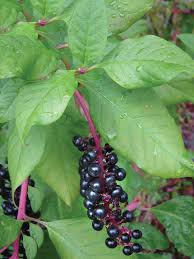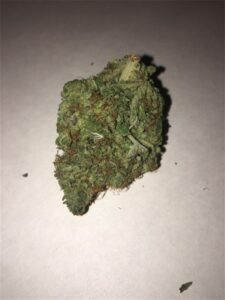Poke Weed, Pokeweed, scientifically known as Phytolacca americana, is a plant that has intrigued botanists, herbalists, and even foragers for centuries. Commonly found in the United States, this plant is known for its striking appearance and its complex relationship with both people and wildlife.
Appearance and Habitat
Pokeweed is a perennial herbaceous plant that can grow up to 10 feet tall. Its large, ovate leaves are a deep green, and it produces striking clusters of berries that shift from green to a dark purple as they mature. The plant is commonly found in a variety of habitats, including woodlands, fields, and along roadsides. It thrives in rich, well-drained soils and can be quite invasive if not managed properly.
Historical Uses
Historically, pokeweed has been used in various ways by different cultures. Indigenous peoples of North America utilized pokeweed for its medicinal properties, albeit with caution. The root and berries contain compounds that can be toxic if ingested in large quantities, but when used correctly, they were believed to have therapeutic benefits. For example, pokeweed was used in traditional medicine for its purported anti-inflammatory and diuretic properties.
Toxicity and Safety
Despite its historical use in folk medicine, pokeweed is notorious for its toxicity. All parts of the plant, including the leaves, stems, and berries, contain toxic alkaloids such as phytolaccatoxin. Consuming even small amounts of the plant can lead to symptoms such as nausea, vomiting, and diarrhea. In severe cases, it can cause more serious health issues, including respiratory distress and convulsions. Therefore, it is crucial to exercise extreme caution and seek professional advice before considering any medicinal use of pokeweed.
Modern Uses and Research
In recent years, pokeweed has garnered interest in scientific research, particularly for its potential medicinal properties. Some studies have investigated the plant’s compounds for their possible anticancer and antiviral activities. However, these studies are still in the early stages, and more research is needed to fully understand the potential benefits and risks associated with pokeweed.
Conclusion
Pokeweed is a plant that encapsulates the duality of nature: beautiful and intriguing yet potentially dangerous. Its rich history and ongoing research highlight the complex relationship humans have with the natural world. Whether you encounter pokeweed in the wild or read about it in scientific literature, it serves as a reminder of the delicate balance between harnessing nature’s gifts and respecting its power.
You Might Also Like These:



